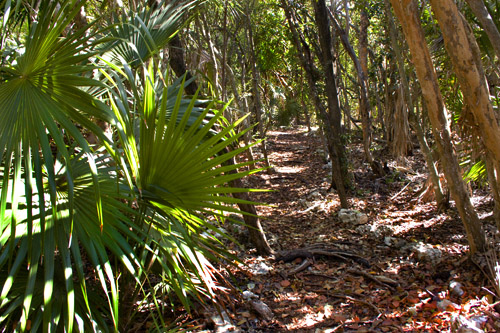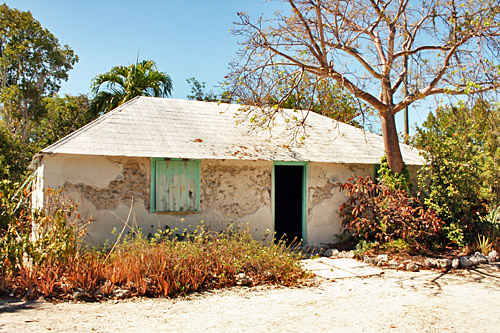Each trip to Key West takes me past sites and attractions that look interesting. I always have the best of intentions – I tell myself I will investigate on my way home – but something always interferes. Fortunately, this trip finally allowed me a few days to wander home unhurriedly, stopping at various places in the middle and upper keys.
My first stop was at the Crane Point Museum and Nature Center in Marathon. It was a sweltering 92 degrees when I hit the trails at 3 p.m., but the temperature cooled the moment I stepped beneath the thick canopy of overarching boughs sheltering the leaf-strewn path. Minimal sunlight penetrated the dense green foliage, casting the path in shadow. Blinking, I walked carefully, waiting for my eyes to adjust to the darker interior.

My every step sent unseen animals skittering around the forest floor. I knew the sounds were probably made by lizards and geckos, but the thick carpet of fallen leaves underfoot could also harbor snakes, so I watched where I placed my sandal-clad feet. Where the trail became wider, another hazard emerged. Golden orb and weaver spiders had woven their webs across the trail. Had the enormous arachnids not been poised in the center of their webs, I might well have walked right through them.

In places the dense foliage thinned to reveal shallow pits in the earth – places where acid rain had dissolved the underlying coral, leaving behind water-filled depressions so crucial for the survival of native animals. Hardwood hammock gradually changed to thatch palm hammock, which in turn led to mangrove forest, tidal lagoons, and ponds. A boardwalk crossing the wetlands baked in direct sunlight, emitting a faint scent of cedar sap. Other fragrances were equally intriguing. Several places in the forest reeked of what I felt sure was skunk, but I later learned the odor is emitted by a particular tree. In other areas, miniature white flowers exuded powerful fragrances reminiscent of tropical flowers like Ylang Ylang.
Evidence of human use at Crane Point dates back more than seven hundred years but the first documented permanent settlers were George and Olivia Adderley, who came to Florida from the Bahamas in the 1890’s. They purchased 32 acres and constructed a classic Bahamian home of Tabby, a concrete like material made of burned conch and other shells. The Adderley’s lived on the site from 1902 until 1949, eking out an existence by selling turtles they caught, sponges they harvested, and charcoal they made from abundant buttonwood. For food they grew root vegetables, pigeon peas, and fruit trees.

In later years the Adderley’s sold a right of way to the Overseas Railway, and Vaca Station was created. After living off the land for nearly half a century, George Adderley sold his property to Francis and Mary Crane following the death of his wife. The Cranes built a modern house on the property, locating it at the water’s edge on the parcel’s most remote point. As conservationists and horticulturists, they worked tirelessly to preserve the hammock until they sold it in 1970. Before long the site was threatened by the developer’s bulldozer; a complex of private homes and a shopping mall were proposed for the 63 acres. Thankfully, the Florida Keys Land Trust stepped in to rescue the site.
Crane Point, the best preserved tropical hardwood hammock in the middle keys, offers several miles of self-guiding trails where visitors can learn about some of the 160 species of native plants in the hammock from interpretive signage. The facility also includes a Museum of Natural History; the Marathon Wild Bird Rescue Center; the historic Adderley House; the Cracker House, where visitors can observe native snakes, purple pincher crabs, and an observational bee hive exhibit; and a childrens’ activity center. The center is open Monday through Saturday from 10 a.m. to 5 p.m. and Sunday from noon to 5 p.m. Admission is $11 for adults, $9 for seniors (65+), and $7 for children aged 6-12 (under 6 free).

Another great blog Barbara. I love the Florida Keys. I always stay in Key Colony Beach. Nice and quiet down that road. Crane Point is beautiful that’s for sure. All the best.
.-= Charles Rinehart´s last blog ..Bahia Honda State Park….Don’t Miss This Beautiful Place =-.